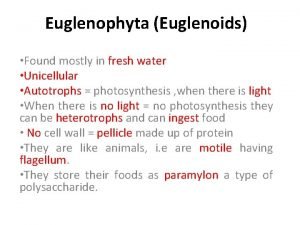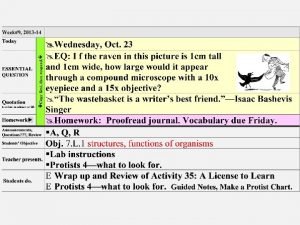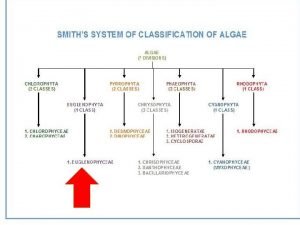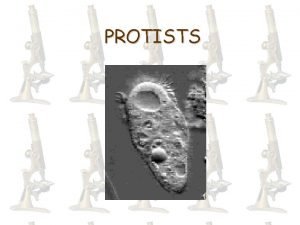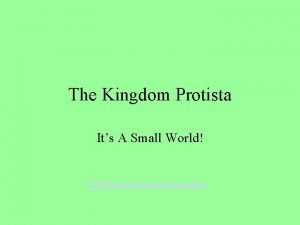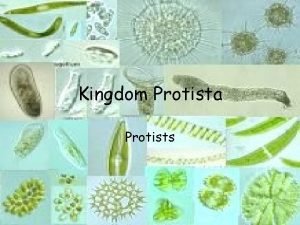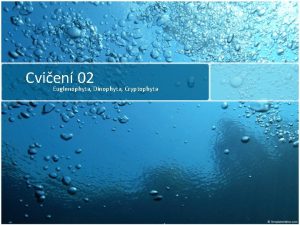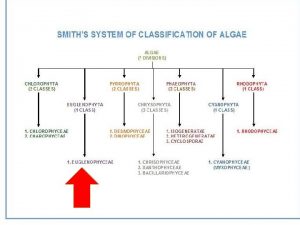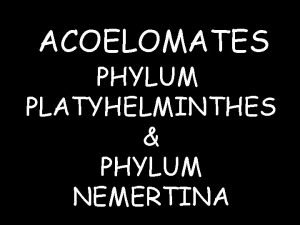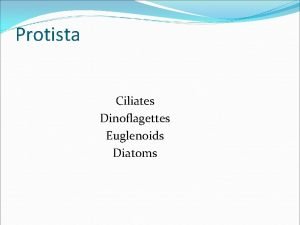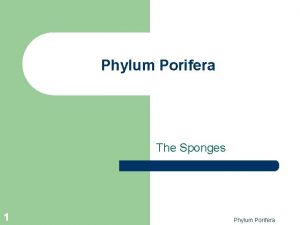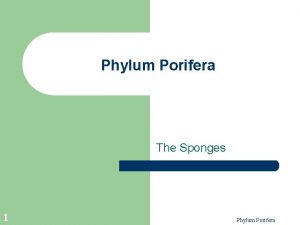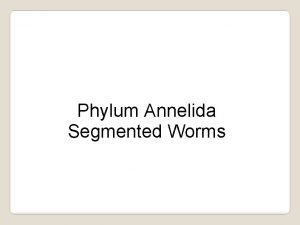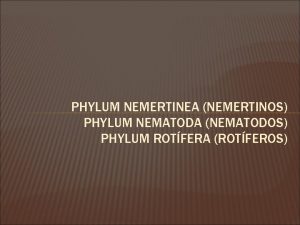Euglenoids Phylum Euglenophyta Have red eyespots that respond













- Slides: 13

Euglenoids • Phylum: Euglenophyta • Have red eyespots that respond to light. • Use flagella (whip-like tails) for movement.

Protist • A single or many celled organism that lives in moist or wet surroundings. • Eukaryotic organisms (meaning their cells have a nucleus. )

Green Algae • Phylum Chlorophyta • Volvox and spirogyra are two types of green algae. • Green algae are the most common of all algae.

Flagellates • Phylum Zoomastigina • Flagellates have long flagella (whip-like tails) to help them move. • Trypanasoma – a parasite that causes African Sleeping Sickness

Diatoms • Phylum Bacillariophyta. • Can make their own food. • Their shells have many uses (toothpaste, sparkle in paint, filters. )

Dinoflagellates • Phylum Dinoflagellata. • Known as fire algae because of their red color. • Can cause health problems when they are consumed by shellfish on the East Coast.

Red Algae • Phylum Rhodophyta. • Are used to make pudding and toothpaste. • Found in depths of water.

Ciliates • Phylum Ciliophora. • They move by using little hairs called cilia. • Their cells have two nuclei. • Example: Paramecium which are widespread in stagnant ponds.

Brown Algae • Phylum Phaeophyta. • Called “kelp” on the west coast. • Are an important food source. • Are used to make ice cream.

Sporozoans • Phylum Sporozoa. • Are all parasites that feed on blood.

Pseudopods • Phylum Pseudopodia. • Example: Amoeba. • Have a “false foot” that allows them to move.

Plant-Like Protists • Are called “algae. ” • They contain chlorophyll, which allows them to make their own nutrients. • Algae are divided into 3 groups, or phyla, based on their color.

Fungus-Like Protists Slime Molds Water Molds • Most of the time, they are like amoebas, another protist, and the other part of the time, they are like fungi. • They reproduce with spores, like fungi. • Resemble fungi. • Attack and feed on: plants, fungi, and algae.
 Euglenophyta (euglenoids)
Euglenophyta (euglenoids) Why are paramecium the most complex of the protists?
Why are paramecium the most complex of the protists? Characteristics of euglenophyta
Characteristics of euglenophyta Diatoms are multiflagellate
Diatoms are multiflagellate Phylum euglenophyta examples
Phylum euglenophyta examples Euglenoids
Euglenoids Protists
Protists Are protists heterotrophic or autotrophic
Are protists heterotrophic or autotrophic Ngoại tâm thu thất chùm đôi
Ngoại tâm thu thất chùm đôi Block xoang nhĩ là gì
Block xoang nhĩ là gì Thể thơ truyền thống
Thể thơ truyền thống Thơ thất ngôn tứ tuyệt đường luật
Thơ thất ngôn tứ tuyệt đường luật Walmart thất bại ở nhật
Walmart thất bại ở nhật Tìm vết của đường thẳng
Tìm vết của đường thẳng
